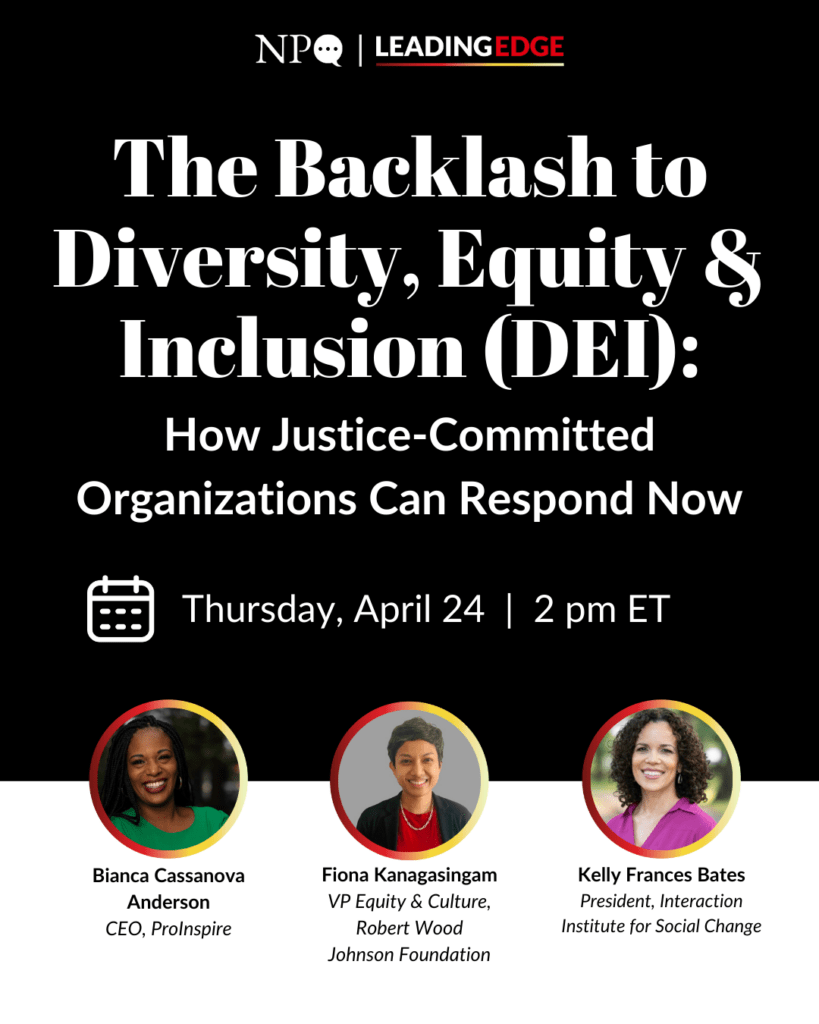
My parents bought a home in Detroit that is soon to become memorialized in a documentary film about segregation and housing. If our family home were located in the suburbs of Detroit it would be worth 10 times what it is today. In fact, its value is a slim fraction of that of similar suburban homes. Why is this the case?
This isn’t just a Detroit dynamic. At the close of 2000, nearly 74 percent of whites owned homes compared to 48 percent of people of color, according to the Joint Center for Housing Studies of Harvard University. The value of homes that people of color do own is substantially lessened if the metropolitan regions they live in are racially segregated. David Rusk has referred to this as a “segregation tax” paid by housing consumers.
I attended high school after the landmark Brown v. Board of Education decision and experienced my school becoming more deeply racially segregated. More than two decades after the Detroit schools were found to be profoundly segregated in the Milliken lawsuit, my nieces and nephews go to schools in Detroit that remain highly racially isolated. Why is this the case?
Researchers at the Lewis Mumford Center just announced that, as of the year 2000, African American, Latino, and Asian American students were more racially isolated than they were in the beginning of the 1990s. African American and Latino students in segregated school settings are attending schools where roughly two-thirds of their classmates are poor, researchers report. Funding disparities remain stark between high property and low property value school districts—typically following racial lines.
Most people would not dispute the assertion that entry-level job growth is occurring at great distances from where people of color are more likely to live in our metropolitan regions. One analysis of cities in the Midwest and Northeast found, in fact, that there have been triple-digit increases in retail and service jobs in the suburbs over the past several decades while the central cities have experienced marked decline.
People traveling to central cities in most every region see families of color living there, whereas when they drive into affluent suburbs they see very few families of color. Central cities are often marked by decaying structures and deteriorated schools, while many newer suburbs boast substantial new development and brand new school buildings. Why is this the case?
Disparities in inheritance are also commonly understood. Dalton Conley tells us that by 2011 the baby boom generation will inherit approximately $7 trillion. But very little of this wealth will go to people of color; in fact, many people of color will inherit debt from their parents. Changes to inheritance tax laws that pull dollars out of the public sector stand to compound this and other inequities.
Criminal justice is yet another area where our society has a familiarity with the profundity of racial disparities. As one example, The Sentencing Project reported in the 1990s that while 14 percent of all drug users were African American, African Americans made up 35 percent of all arrestees for drugs, 55 percent of those convicted for drug offenses, and 74 percent of individuals who were sentenced for drug offenses.
The causes of these disparities and their consequences—not just for people of color, but for our society as a whole—are far less widely understood.
These vastly different outcomes for people of color and whites in housing, education, wealth, and treatment under the criminal justice system are all examples of structural racism at work. What these disparities have in common is that they are rooted in laws and policies that disadvantage people of color and overadvantage whites. They simply cannot be explained by racial animosity on the part of whites nor by bad choices made by people of color.
In fact, racial animosity is not even necessary for racial disparities to be perpetuated. Were every person to behave in daily interactions with intelligence and kindness toward people of other races, ours would be a better society, but these disparities would not disappear. This is because the patterns for racial inequality have been set.
Persistent racial disparities are not dependent upon racial animus or ill will; this is why they are termed “structural.” This is the racism that is built into all of our structures, it is the status quo, and will only be undone in a lasting way when structures are reformed. To borrow from Newton and his notion of inertia, racism in motion stays in motion unless forces counteract it.
Consider that we have laws that prohibit racial discrimination in lending and home purchasing—homeownership being the primary gateway to wealth in this country. Despite these formal protections there are enormous differences between the degree of wealth that African Americans have accumulated and the degree that whites have. This is because patterns that reproduce inequities in wealth, such as those that pull resources to white suburbs and contribute to the economic decline of city neighborhoods, have been set. In Being Black, Living in the Red, Dalton Conley reveals that at the time of the Emancipation Proclamation in 1865, African Americans controlled 0.5 percent of all wealth in the United States. In 1990, African Americans controlled one percent of the total wealth of this wealthy nation. Over the span of 135 years, African Americans’ share of wealth in the United States increased by only one-half of one percentage point.
Many contemporary disparities are tied to what Cardinal George of the Archdiocese of Chicago calls “spatial racism.” Over the past century, racism, once written on the books, became more subtly manifest in laws and policies that prevented school desegregation from occurring in many metropolitan regions, limited homeownership in new suburbs for people of color, grossly underserved the transit needs of racial minorities and other city residents, and relegated people of color to economically struggling areas within central cities. The formal exclusion of African Americans and other people of color from employment, education, housing, and wealth-creating opportunity structures was ended as a result of vigilance on the part of the civil rights community, but it was replaced by laws and policies that similarly cut people of color off today.
We see this in the metropolitan sprawl that describes the often insurmountable distances between where people of color live and where opportunities are located in metropolitan regions (the sprawl that the government continues to pay for through a host of subsidies).
An article in the New York Times reported that in the five-year span between 1993 and 1998, 14 million jobs were created in the U.S., but only 13 percent of these were located in central cities. That jobs are booming in the suburbs is neither natural nor accidental. Job flight is encouraged by government policy, including the types of local and state government subsidies that Greg LeRoy has written about, subsidies that actually relocate job centers within a single metropolitan region.
We also see this in the local government powers that allow more affluent suburbs to exclude affordable housing. As of the mid-1990s, according to the Center on Budget and Policy Priorities, the number of low-income households exceeded the number of low-cost rental units in the U.S. by 4.4 million, with nearly two low-income renters competing for every low-cost unit. While the affordable housing crisis continues to plague the nation, it hits families of color disproportionately because of income disparities. What is less understood is that a major cause of the affordable housing crisis (and not just the racial segregation in our regions) is the vesting of zoning power in local governments and their adoption of exclusionary zoning policies. Rolf Pendall studied low-density zoning in this nation’s major metropolitan regions and found that the zoning not only kept families of color out of suburbs, it actually foreshortened the supply of affordable housing.
The role of local government power is apparent in school attendance policies and property-based school funding laws that reproduce neighborhood disparities in public schools. Nationally, the Education Trust tells us, economically isolated districts have about $1,000 less to spend per student than wealthy districts.
Sign up for our free newsletters
Subscribe to NPQ's newsletters to have our top stories delivered directly to your inbox.
By signing up, you agree to our privacy policy and terms of use, and to receive messages from NPQ and our partners.
In short, over the course of the last century, racism leaped from being inscribed in our laws to being inscribed in our land.
I consider this inscription of race and power into the structuring of our metropolitan regions the racial justice challenge of the 21st century. Along with suggesting the utility of the frame of “structural racism in metropolitan dynamics,” I would like to suggest that the nonprofit sector can advance this work by collaborating with emerging allies and by taking advantage of new opportunities that are opening.
New allies are already strengthening efforts to redress structural racism in multiple spheres. Certainly, the role of the business community in supporting the admissions policy at the University of Michigan indicates that we have a new ally in our efforts to make education more racially and economically equitable. The business community has also voiced a frustration with exclusionary zoning policies that limit the affordable housing stock workers need (for example, the Chicago Metropolis 2020 group has shown remarkable leadership in this area). Business groups in a number of regions have also come out in favor of better transit systems so that workers can get to jobs.
Faith-based organizations are also leveraging their influence on issues of fair and affordable housing, educational equity, transit justice, and economic development. For instance, MOSES is spearheading an effort to revitalize Detroit by making the huge supply of vacant land in that central city available for development. And the Northwest Indiana Interfaith Federation has struggled for over five years to improve transit options in that region, so that low-income workers, disproportionately workers of color, can travel to jobs.
New opportunities are opening for reform of the structures that produce inequities in our regions. In particular, the attention that environmentalists, the business community, and the public are paying to sprawl, the health of metropolitan regions, and the mismatch between workers and jobs is creating new avenues. In November 2001 alone, voters committed over $1 billion to open space and anti-sprawl measures. By joining these efforts and ensuring that policies not only improve regions but advance racial justice goals, we can create win-win situations.
The surge in support for policies and measures that counter sprawl and promote regional coordination of resources is driven by a number of causes. Certainly, many members of the business, environmental, religious, and Smart Growth communities are enlightened and seek social justice as a good unto itself. What others recognize is that the vitality of a region depends upon economic growth, educational quality, and strong neighborhoods in every sector of that region. It is in everyone’s self-interest to counter regional inequities—to undo spatial racism.
The nonprofit sector has a crucial role to take in ensuring that policies and programs not only harness sprawl but truly enhance equity within our regions. By this, I mean policies that locate affordable housing, high-performing schools, employment opportunities, and a strong municipal tax base in every sector of the region. Regionalism has harmed the political power bases of communities of color, for example in the Indianapolis region, and undermined community strength.
Today’s regionalism cannot repeat so-called urban renewal. The sector can push, instead, for the adoption of the right policies—those that distribute resources in a more balanced manner and safeguard against harms to communities of color. Not only, then, should the regional agenda address inclusive zoning policies, revenue sharing, effective transit systems, and reinvestment in central city neighborhoods, the agenda should include a demand for democratic governance and decision-making processes.
There are many entry points for nonprofits; this work is not limited to policy advocacy. We can make gains on our goals of increasing the supply of affordable housing, making schools more equitable, improving access to employment, and more fairly distributing economic development in a host of ways. I recommend that nonprofit sector members seek out information about how regional dynamics impact their work by looking at reports and briefing papers by the National Neighborhood Coalition and PolicyLink, among others emerging nearly every month and often available online. Sharing information on the effects of regional dynamics such as sprawl with constituents is helpful to broadening an understanding of how region-level dynamics can frustrate our efforts. Identifying regional coalitions that are already at work in our regions, like the Alliance for Metropolitan Stability in the Twin Cities region or the Bay Area Transportation and Land Use Coalition, is another way to begin to get involved. Nonprofits can voice their support for regional strategies that complement their work and seek out partnerships with organizations implementing grassroots, policy-oriented, and litigation strategies at a regional level. And nonprofits can participate in and shape regional decision-making processes, such as transportation planning. In these and a multitude of other ways, nonprofits can help to reverse the negative outcomes of metropolitan dysfunction and enhance racial and economic equity.
Articles and reports on race and regionalism by the Institute on Race and Poverty are available by visiting the website of the Institute on Metropolitan Opportunity. In particular, IRP’s new report, “Racism and Metropolitan Dynamics: The Civil Rights Challenge of the 21st Century,” examines the connections between metropolitan development dynamics and racial disparities, stressing the importance of regional coordination of development, effective regional governance, and regional advocacy strategies that promote racial justice.
The National Neighborhood Coalition has developed useful resources as part of their Neighborhoods, Regions, and Smart Growth Project, available at (www.neighborhoodcoalition.org). The coalition’s “Smart Growth, Better Neighborhoods: Communities Leading the Way” report offers very valuable case studies of community organizations and coalitions making strides on affordable housing, transit, and school equity, among other concern areas.
PolicyLink, based in Oakland, has shown leadership in this area and features helpful publications and tools online, at (www.policylink.org). Visitors to their online publications page will find briefing papers on regionalism and equity tailored to the needs of multiple audiences, including community organizations and members of the philanthropy community.
The Center on Urban and Metropolitan Policy of the Brookings Institution has a metropolitan initiative oriented to regional equity. A number of case studies and research reports are available at (www.brook.edu), including “Who Sprawls Most? How Growth Patterns Differ Across the U.S.”
See also the Nonprofit Quarterly’s coverage of regionalism in the Fall 2001 issue on Strategic Relationships.
Colleen Walbran assisted in the research for this article.










